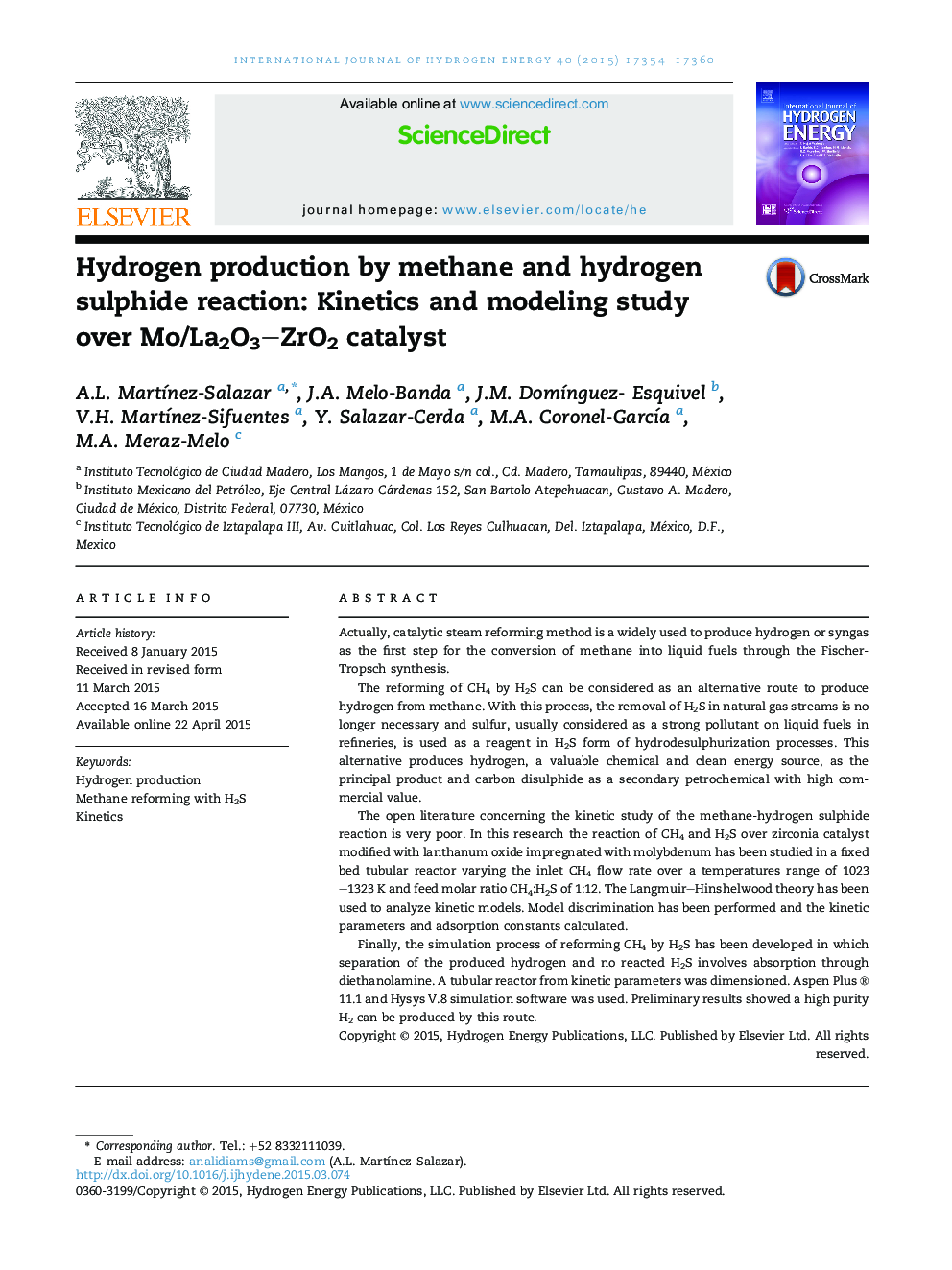| Article ID | Journal | Published Year | Pages | File Type |
|---|---|---|---|---|
| 1269025 | International Journal of Hydrogen Energy | 2015 | 7 Pages |
•Kinetic of the catalytic reaction of CH4 reforming with H2S over Mo/La2O3–ZrO2 was studied.•The Langmuir–Hinshelwood theory has been used to analyze kinetic models of H2 production.•Values of the kinetic parameters and adsorption constants were obtained.•A process flowsheet of the kinetic reaction has been built.•The size of the tubular reactor was adequate: three meters in length and 30 cm in diameter.
Actually, catalytic steam reforming method is a widely used to produce hydrogen or syngas as the first step for the conversion of methane into liquid fuels through the Fischer-Tropsch synthesis.The reforming of CH4 by H2S can be considered as an alternative route to produce hydrogen from methane. With this process, the removal of H2S in natural gas streams is no longer necessary and sulfur, usually considered as a strong pollutant on liquid fuels in refineries, is used as a reagent in H2S form of hydrodesulphurization processes. This alternative produces hydrogen, a valuable chemical and clean energy source, as the principal product and carbon disulphide as a secondary petrochemical with high commercial value.The open literature concerning the kinetic study of the methane-hydrogen sulphide reaction is very poor. In this research the reaction of CH4 and H2S over zirconia catalyst modified with lanthanum oxide impregnated with molybdenum has been studied in a fixed bed tubular reactor varying the inlet CH4 flow rate over a temperatures range of 1023–1323 K and feed molar ratio CH4:H2S of 1:12. The Langmuir–Hinshelwood theory has been used to analyze kinetic models. Model discrimination has been performed and the kinetic parameters and adsorption constants calculated.Finally, the simulation process of reforming CH4 by H2S has been developed in which separation of the produced hydrogen and no reacted H2S involves absorption through diethanolamine. A tubular reactor from kinetic parameters was dimensioned. Aspen Plus ® 11.1 and Hysys V.8 simulation software was used. Preliminary results showed a high purity H2 can be produced by this route.
Graphical abstractFigure optionsDownload full-size imageDownload as PowerPoint slide
